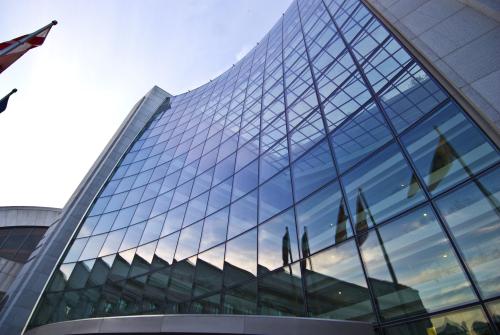For the busy, cost-focused corporate executive, the world of business travel has a new offering.
With investor, regulator and media scrutiny of executive perks and expenses at its most intense levels ever, business travel has become an important issue. The widespread use of private company jets has decreased dramatically in recent years, as companies re-evaluate their use of private travel and look for more cost-effective and investor-friendly options.
This development has led to a number of changes, and one innovative solution has emerged from the commercial passenger airline industry. Lufthansa, Europe’s second largest airline, has developed a combined commercial/private service called Lufthansa Private Jet, which allows customers to fly from the US to Europe and elsewhere on regularly scheduled flights and then use private jet facilities for onward travel to other destinations.
By utilizing a combination of commercial flights and a fleet of small private jets, passengers benefit from greater efficiency and a wider choice of destinations. At present, clients can fly from any of the 16 regularly serviced US destinations directly to the European hubs of Frankfurt and Munich. It is after arrival in Europe that the private part of the service comes into its own.
Lufthansa has negotiated special relationships with customs and border security at both the Frankfurt and Munich airports. Clients of the private service are met at the plane by a personal representative who escorts them to a separate customs processing center, which saves considerable time and makes for a far more relaxing transfer. In fact, the airline guarantees a maximum transfer time of 45 minutes in Frankfurt and only 30 minutes in Munich.
According to Mathias Friess, director of passenger sales, North America, regular executive passengers were increasingly asking for greater flexibility on scheduled flights and better access to regional airports. While service to smaller airports – which are often closer to city centers – has always been available, it is often not easy or cost effective to get there. In response to these demands, the airline teamed up with NetJets, the world’s largest private jet operator, and now offers flights to more than 1,000 destinations throughout Europe.
This can be extremely useful for business travelers who need access to smaller cities that do not have a major transportation hub. No doubt, conducting site visits to factories based in industrial cities or visiting plants that previously were only accessible via ground transportation can be time consuming. However, it is possible that by using a private jet to fly directly into smaller cities, passengers can save as many as five hours on their total transit time. This can be an immense benefit to busy executives, for whom time is money. From a sales perspective, being able to conduct face-to-face meetings with people you would not otherwise be able to meet in person can prove invaluable.
Another benefit is the ability to change plans up until the last minute. We have all been in situations where business meetings are changed on short notice. This can be problematic enough when you’re at home, but if you’re traveling, it may not be possible to adjust your travel plans if you are tied to a rigid departure schedule or limited by airport availability with your airline. With a private jet, changes to itineraries, new bookings and cancellations can be made with as little as 24 hours’ notice, allowing much greater flexibility to change plans and reorganize meetings.
The number of passengers can also be changed on short notice since clients book the whole jet, rather than just individual seats. So, if you need to bring along additional personnel or would like a client to accompany you, these changes can easily be arranged. There are a number of plans available, and seating capacity ranges from six to ten people.
Another major bonus of the Lufthansa system is the pricing structure. The combination of commercial flights and private jets is far cheaper than traditional private jets flying all the way from the US into Europe, or purchasing a corporate jet for the exclusive use of employees. Such transactions would usually appear in company financial statements as private jet usage, and while these are, for the most part, perfectly legitimate expenses, investors are becoming increasingly sensitive to such spending.
Under the Lufthansa system, billing is done under a single ticket structure from point of origin of the commercial flight. Therefore, on the travel expense section of financial reports, there would be no mention of private jet usage, which may save the headache of having to treat certain travel expenses differently and justifying necessary travel to outsiders.
For cost-conscious companies, it is also important to note that all legs on private jets and the scheduled flights are valid for Lufthansa’s Miles & More air-miles scheme, which is part of the Star Alliance scheme. This offers a significant advantage to regular travelers and may result in further cost savings in the future, as travelers receive 10,000 miles for each leg of their private jet journey.
For busy professionals looking to minimize the amount of time they spend traveling and maximize the total number of hours they spend working, long-haul flights and private transfers can be extremely frustrating. This problem has been reduced to a large degree by Lufthansa, which now offers laptop ports and internet connections on some flights. Certainly, the private jets are fully equipped to act as a mobile office, so those executives who don’t want to miss a moment of work don’t have to.
As business continues to become more global, the need for efficient international business travel is more important than ever. The increased flexibility and efficiency of combining private jet travel with regular passenger service is a significant development in the world of business travel.
Please contact the Lufthansa Private Jet service center at 1-888-261-0814 or visit www.lufthansa-private-jet.com








